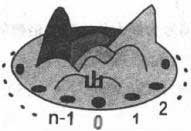标签:
Time Limit: 2000/1000 MS (Java/Others) Memory Limit: 65536/32768 K (Java/Others)
Total Submission(s): 5502 Accepted Submission(s): 2765
Problem Description
There is a hill with n holes around. The holes are signed from 0 to n-1.

A rabbit must hide in one of the holes. A wolf searches the rabbit in anticlockwise order. The first hole he get into is the one signed with 0. Then he will get into the hole every m holes. For example, m=2 and n=6, the wolf will get into the holes which are
signed 0,2,4,0. If the rabbit hides in the hole which signed 1,3 or 5, she will survive. So we call these holes the safe holes.
Input
The input starts with a positive integer P which indicates the number of test cases. Then on the following P lines,each line consists 2 positive integer m and n(0<m,n<2147483648).
Output
For each input m n, if safe holes exist, you should output "YES", else output "NO" in a single line.
Sample Input
Sample Output
题意:一狼一兔,狼围绕一个均匀分布着n个兔子洞的山转圈,狼每经过m个洞口,就会进入洞中,那么这个洞就是不安全的。问n个洞中,是否存在安全的洞让兔子藏身才能不是可爱的兔子惨遭毒手呢。
解析:开始想的时候,最先想到的就是,如果n % m == 0,那么就存在。但是当m == n == 1时,就不成立了,并且还存在n < m的情况,同样也可能不存在安全的洞穴。所以,就不能这么简单的想了。后来发现只要两者互素,即gcd(n, m)== 1,就存在安全洞穴,否则不存在。
PS:本题由于数据很大,不能用递归版本的gcd,必超时!!!所以,还是手动写非递归版本吧。
AC代码:
#include<stdio.h>
int gcd(int n, int m){ //非递归的gcd
while(m!=0)
{
int t=n%m;
n=m;
m=t;
}
return n;
}
int main()
{
int m,n,i,k;
scanf("%d",&k);
for(i=1;i<=k;i++){
scanf("%d%d",&n,&m);
printf("%s\n", gcd(n, m) == 1 ? "NO" : "YES");
}
return 0;
}
hdu 1222 Wolf and Rabbit (GCD)
标签:
原文地址:http://blog.csdn.net/u013446688/article/details/42680371
